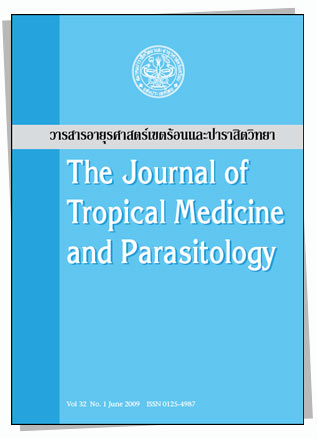Trichinellosis in Thailand: Epidemiology, Prevention and Control
Main Article Content
Abstract
Abstract
Trichinellosis (trichinosis), a helminthic zoonotic disease caused by parasitic nematodes of the genus Trichinella, can be transmitted from animals to humans. The disease is distributed world-wide and has been the source of major public-health problems in many countries, including Argentina, Mexico, China, Japan, Korea, Thailand, and some European countries. Human infection occurs by ingesting the raw, or inadequately cooked, meat of animals harboring infective larvae. The main sources of human infection are pork and pork products, game meat, and horse meat. Since 1962, trichinellosis outbreaks have occurred almost every year in Thailand, with more than 6,000 infected cases. The causative agents of the Thai outbreaks have mostly been encapsulated T. spiralis larvae. However, in 1994, there was an outbreak due to T. pseudospiralis in Chumphon Province, southern Thailand. This was the first report of an outbreak in Thailand due to infection with nonencapsulated Trichinella larvae. Subsequently, in 2006 and 2007, two outbreaks due to T. papuae, also known to have non-encapsulated larvae, were reported in Uthai Thani Province. Health education for villagers in rural communities is important, to prevent and control trichinellosis and other parasitic infections.
Keywords : trichinellosis, outbreak, epidemiology, Thailand, health education, community

